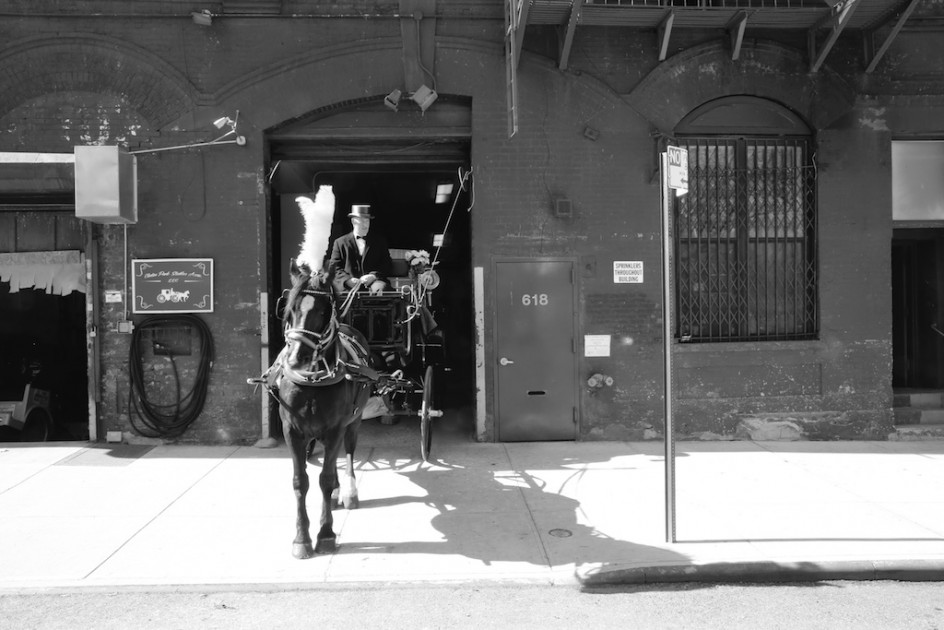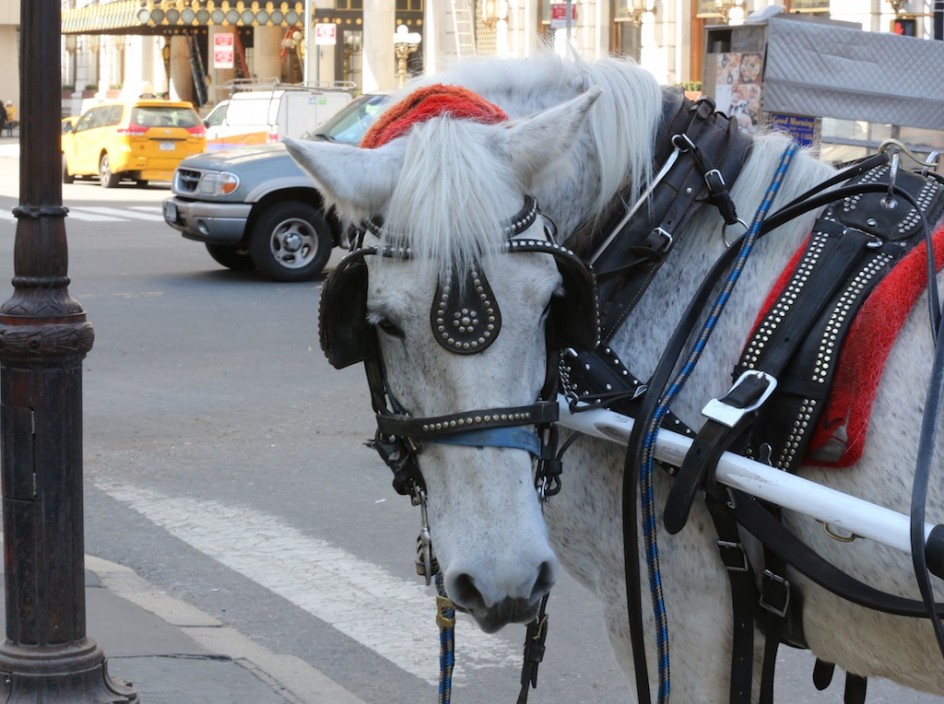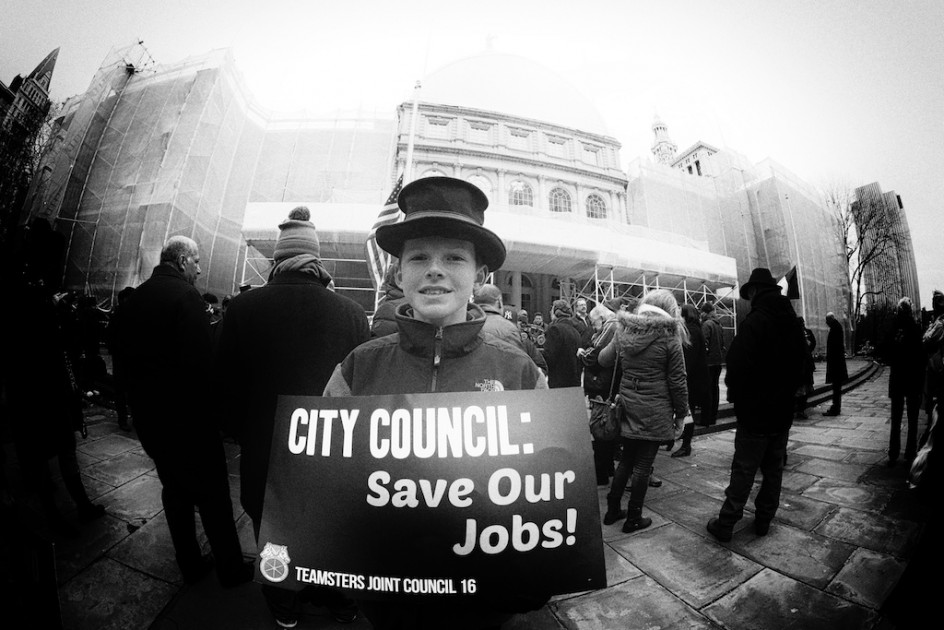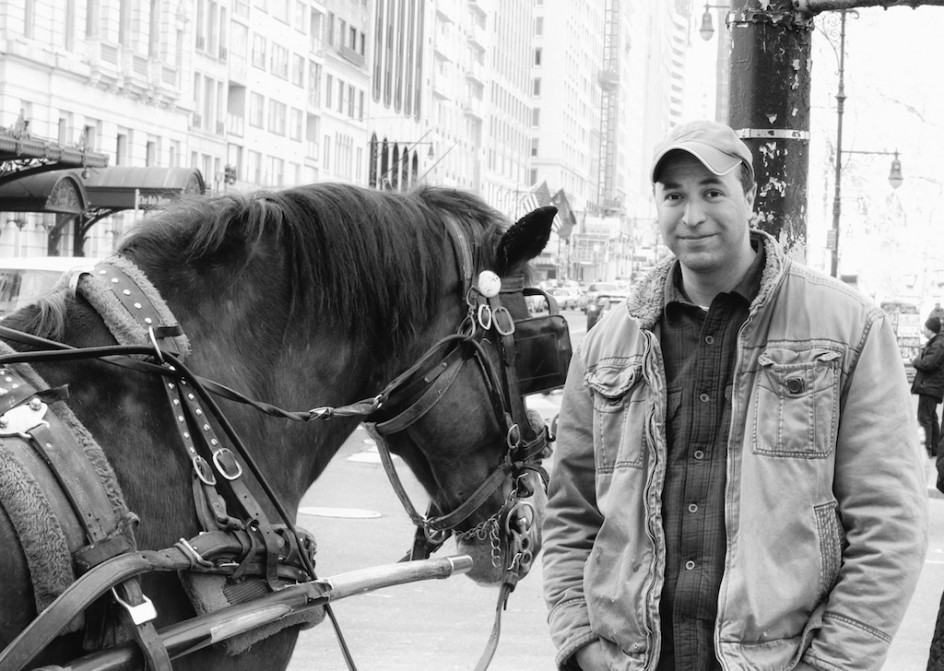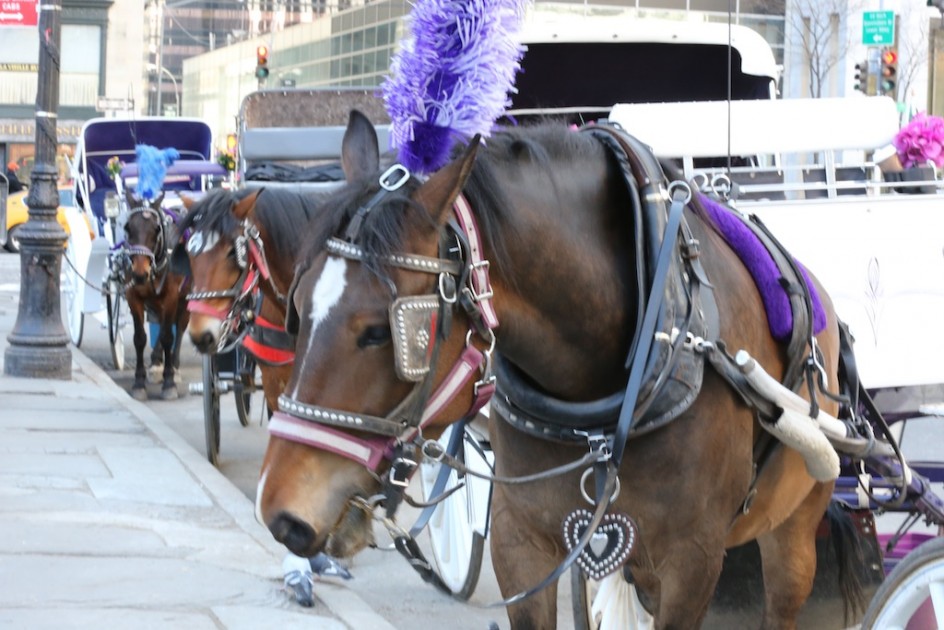
“Under the law of nature, all men are born free, every one comes into the world with a right to his own person, which includes the liberty of moving and using it at his own will. This is what is called personal liberty, and is given him by the author of nature, because it is necessary for his own.”- Thomas Jefferson.
The long and painful New York Carriage Horse conflict is entering it’s most critical and confusing phase, it is difficult to grasp what is happening inside all of those closed doors and secret meetings. A number of news organizations have reported that the carriage trade and the mayor have made a deal and reached an agreement. That is not yet so.
I’ve been talking and listening to a lot of people, and this is what I gather is important.
The carriage trade is fighting for its life right now against mayor who seems irrational and obsessed, and possibly corrupt. If he wins this battle, it will clearly be a phyrric victory, it seems foul.
There is no deal, no agreement, between the mayor, the animal rights activists working with him, and the carriage trade. They are far apart on several fundamental issues, including and especially how many horses will remain in he city, and whether the industry will survive in any kind of independent or recognizable form.
If the mayor’s bill passes the City Council in the way it was proposed, the carriage trade will cease to exist as we know it. More than half of the drivers will lose their work, more than 150 horses will have to leave the city, and the carriage trade will be regulated by a new board composed in part of members of the animal rights group that have worked so hard to destroy them, NYClass, a group that claims to speak for the rights of animals, but does not appear to ever have saved a single one.
It is apparent by now that the mayor, thwarted in his effort to ban the carriage trade outright, is using the power of a $75 billion budget to ram legislation through a historically weak City Council with his own personally-chosen Speaker, that would, in effect, ban the industry without having the courage to come out and say it.
No one in the city but a handful of animal rights groups favors this path. Every age, gender, political and racial group in the city opposes banning the horses, 3-1. The only other time in memory the city was so united was after 911. It is revealing that the mayor has chosen to ignore this very clear mandate.
Initially, the mayor proposed to cut down the number of horse medallions from 68 to 34, working shifts would be limited to six hours instead of 9, and acceptable temperatures for working horses would be changed. Horses could not work in temperatures above 85 or below 9 degrees. (No horses have been treated for heatstroke or frostbite in modern history).
With only 34 medallions, the industry would have no longer been economically viable.
The idea that the horses are overworked has been an enduring obsession of the mayor and his supporters in the animal rights movement, there is absolutely no evidence to support the claim, pulling light carriages on asphalt in central park would be the envy of most of the working horses in history or on many farms around the world. The new proposals would drastically increase the workload of the remaining horses.
One of the most controversial elements of the mayor’s proposal is his effort to limit the number of horses in the new stable to approximately 75. Now, about 220 horses pull 68 carriages. Even though demand for rides would remain unchanged, that would mean at least double the amount of work for each horse, an odd proposal for a mayor who has insisted the industry should be banned in part because the horses are overworked.
The mayor’s proposal refuses to permit carriage owners to use spare or substitute horses, or to even occasionally bring in horses from outside of the new stables. Negotiators describe this as the major obstacle to an agreement. That surprises me, but a lot of the others seem troubling as well.
It is not clear that the powerful Central Park Conservancy supports this plan, and public works projects in the city have a long history of political struggles, bidding scandals, overruns, court fights and long delays. There may also be fierce taxpayer opposition to city money being used to cannibalize the carriage trade, something city residents clearly do not want.
Some of the mayor’s most noxious and original proposals have beaten back in intense negotiations with the Teamsters. Some remain.
The mayor is essentially asking public funds be used to pay off what almost everyone in the city understands is essentially a campaign debt, a promise to NYClass founder Steven Nislick to ban the carriage horses in exchange for helping him win the mayoral race. Nislick, a self-styled animal rights activist, is a real estate developer with properties on the West Side of Manhattan, where the horse stables are.
“Campaign debt “is a generous use of Orwellian mindspeak to define something that appears to be something else. The Merriam-Webster dictionary defines a bribe as “something valuable (such as money) that is given in order to get someone to do something.” A bribe is also defined as this: “persuading someone to act in one’s favor, typically illegally or dishonestly, by a gift of money or other inducement.”
A bribe, even in our time, is illegal.
NYClass gave Mayor deBlasio hundreds of thousands of dollars in campaign contributions and spent more than a million dollars to defeat Christine Quinn, the Republican who was deBlasio’s mayor opponent. The mayor, said the New York Daily News today in an angry editorial this morning, is engaged in a “vanity payback project” to NYClass and taxpayers ought not to be asked to fund it.
The Teamsters Union, which helped beat back the mayor’s original ban attempt, and the carriage owners seem to like the idea of a stable in Central Park, especially one taxpayers would pay for.
They have also won some important concessions in the negotiations. And they may win others when the proposal gets to the City Could. There will be public hearings and a vote there.
If a stable were built in the park, the carriage trade could sell the three stables on the West side for millions of dollars, and their future survival in New York would be assured. If they don’t move to the park, the stables will almost certainly be gobbled up by real estate interests anyway, or threatened by having a mayor in office who is obsessed with destroying the industry. A different mayor could most likely arrange for the carriage trade to city, but the horse owners are certainly wise to be wary.
This mayor is a bit scary. I am struck by how many people involved in the negotiations describe the mayor as “unsettled,” “obsessed,” or “insane.”
Lots of people who are following this story all over the country are asking me what they can to do help, and I honestly don’t know. It seems to me we are past the point of writing e-mails to City Council members, they have heard it all before. The mayor does aspire to being the leader of progressive politics in America, I know for a fact that he is aware of the many e-mails and letters some of you have sent him on this subject.
My blog posts are definitely read by politicians and lobbyists on both sides of the issue, I’ve heard this before, but I would not presume to think my blog or my writing really makes much difference in the outcome. I am not a player in New York politics or media. Liam Neeson is, bless his honest soul.
There are big stakes here for lots of people, and also for the horses. There is no doubt many of those 150 horses would end up being euthanized or sent to slaughter. I can’t imagine how organizations who claim to speak for the rights of animals can justify that. But then, a number of animal rights activists have said they believe the horses would be better off dead than pulling light carriages in Central Park. Then, it makes sense.
I think it is now time for the carriage trade, the drivers and their lawyers to recognize that the mayor is irrational and somewhat unstable on the subject of the horses. He is not reachable either fairness or integrity or democratic process. I have always had this feeling that he is an animal rights ideologue, the first elected to a major city in American history.
The animal rights movement is not an animal rescue or animal welfare movement, it is a self-described animal liberation movement (read Peter Singer’s Animal Liberation: The Definitive Class Of The Animal Movement.)
NYClass, and Mayor deBlasion, who has never owned a dog or a cat, do not believe animals should be owned by people, entertain people in any way, or work with people in any way. This is the only explanation for the fanatic path that the mayor of New York, who has a lot of bigger issues on his plate, has taken on this issue.
Mayor deBlasio has been thoroughly defeated – even ridiculed and humiliated – in his move to ban the horses outright. So his new idea is trying to kill them off in devious and indirect ways – a thousand cuts rather than a single blow. Some are afraid the trade might commit suicide rather than risk years of pressure persecution.
My own view is that it is time for the carriage trade and their lawyers to recognize reality. In many ways, this is now a civil rights issue.
The Legal Information Institute at Cornell defines a civil right this way: “A civil right is an enforceable right or privilege, which if interfered by another gives rise to an action for injury. Examples of civil rights are freedom of speech, press, and assembly, the right to vote, freedom from involuntary servitude and the right to equality in public places, and in dealing with public institutions.”
By almost every measure, the carriage drivers have been denied equal access to government and the regulatory process. The mayor refuses to meet with them, speak with them, negotiate with them. He meets regularly with animal rights groups seeking to put them out of work and destroy their property and way of life. He has taken enormous amounts of money to listen to their agenda, and then to pursue it.
John Locke, Thomas Jefferson, John Adams all said the primary function of government is to protect freedom and property. Mayor deBlasio seeks to distort the legislative and regulatory process to do both to the carriage trade and the drivers – take away their freedom and property and deprive them of equal access. The law requires that regulatory agencies – the carriage trade is a regulated industry – regulate in a manner that is “rational.”
The carriage drivers are fighting for what Jefferson called “personal liberty,” the right to purse their way of life in an honest and rightful way. They have broken no laws, paid all of their taxes, supported their families, bought homes, send their children to college, violated none of the hundreds of regulations that already govern their work. There is no legal, moral or regulatory justification for their persecution.
There is nothing rational about the mayor’s behavior in this issue, or in the legislation he is trying to bludgeon his way through the City Council. I imagine the people in the carriage trade know this, they have already retained Norman Siegel, perhaps the best and most respected and experienced civil rights lawyer in America.
Siegel has repeatedly counseled caution and patience, and I am no lawyer, I am not qualified to tell him his business. The diverse and somewhat carriage trade suffers from internal politics, and the lack of a single unified vision for fending off the mayor. The fact that they have survived at all is a testament to their endurance and commitment, and to the city’s love of its endangered horses.
My own wish for Norman Siegel and the carriage trade is that they now choose to stand up and fight this outrageous government overreach and challenge the mayor and his legislation in the courts, which exist to defend the rights of oppressed people and guarantee equal process.
They may lose, of course, or they may win, but isn’t better to go down standing for the truth and their way of life rather than die the slow and humiliating death of a thousand cuts?
No one, surely not me, can tell anyone else to do that. It is just what my own heart and instincts say. Can you really get into bed with a snake and not get bit? Is the mayor’s commitment to a new stable in Central Park real? Nothing else he says about the carriage trade has been real.
If the new stables do not guarantee the industry a fair and rational opportunity to exist and survive in New York City, I hope the negotiators reject it and take on the mayor directly. I would love to see him testify in court and explaining exactly how much money he got from NY Class and exactly what for. I would like to hear him explain how he can make critical decisions that affect the lives of the constituents he is sworn to protect while refusing to speak with them, meet with them, or acknowledge them as worthy human beings.
There are important issues here that relate to horses, but also to people. My friend Pamela Rickenbach is a former carriage driver and the director of Blue Star Equiculture, the retirement home of the New York carriage horses and a draft horse sanctuary.
I admire her passion for the horses and her own powerful sense of humanity. She knows the carriage drivers and that culture as well as anyone.
She writes eloquently about the drivers and owners in the carriage trade, she reflects my own experience with these remarkable people. This morning, she sent me a message:
“The drivers and owners are a big diverse family of horse people all trying to survive and carry on a way of life that brings them the life they love to live. They are passionate and in my opinion beautiful people. Carriage drivers are an extraordinary collection of artists, writers, dreamers, lovers, engineers, farmers, farriers, fringe dwellers, fathers, mothers, sons and grandchildren. Some recently found this path and some are 2nd and 3rd generation carriage drivers. Some have raised their children ,sent them to college and have homes that they built with the help of their horses. They all have unique talents as drivers, driving in urban settings that are not for everyone, but it does make you a great driver, mindful and aware and tuned into the heartbeat of the city and surroundings. Most can do all of that and tell you stories and histories of the city you are not likely to hear anywhere else ever.”
If the mayor’s bill passes, many horses will suffer trauma, dislocation and death. Many of these good people will lose cherished and precious work and be forced into the corporate maw that has devoured the dreams and spirits of so many other people. A true and honest and rational mayor would fight for these people, not just the millionaire developers who give him so much money and who know nothing about the horses and their real needs.
As always, the animals will suffer for our arrogance and cruelty.
It is a travesty to take these horses out of their safe and productive homes and force them into a world that can no longer accommodate them in any other way. The mayor is not just trying to kill an industry, but a way of life he seems to despise in a very personal and troubling way. That does not seem rational to me either.
All men and women are free, we come into the world with the right to our own person.
I hope the carriage trade gets what they want and need. I hope they find the strength and purpose to stand up for the owners, the drivers and the horses and right a great wrong, once and for all. History tells us there are times when we just have to fight for what is right.

